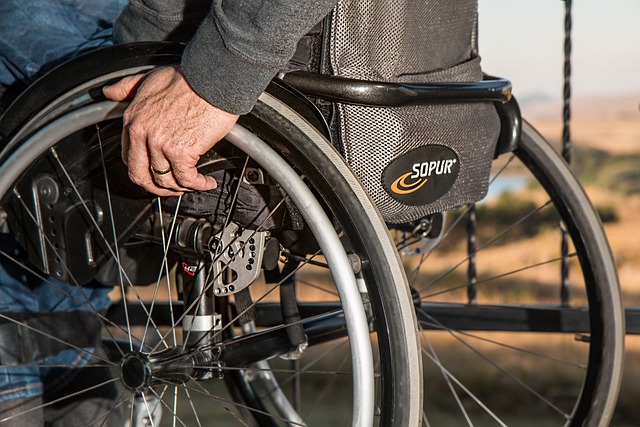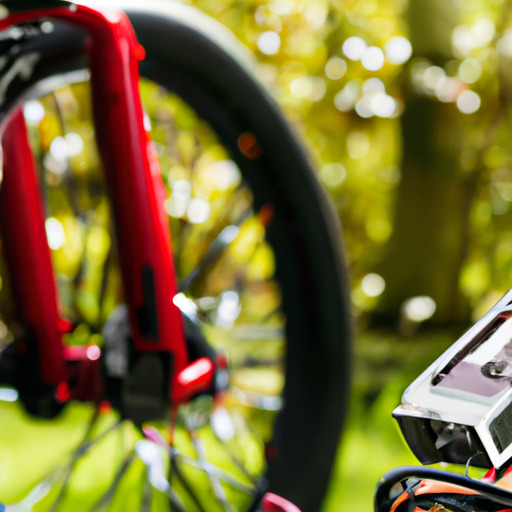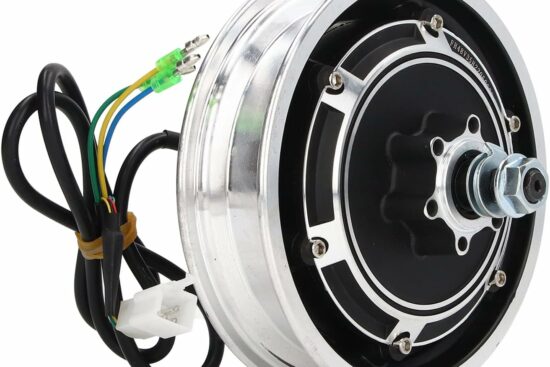
Are you curious to know if e-bikes are covered by insurance? If you’re considering purchasing an e-bike or already own one, it’s important to understand whether or not it is covered by insurance. With the rising popularity of e-bikes as a mode of transportation, it’s a valid question to consider. In this article, we will delve into this topic and provide you with all the information you need to know about insurance coverage for e-bikes.
If you’re wondering about the details of insurance coverage for e-bikes, you’re in the right place. In this article, we will explore the different aspects of insurance coverage for e-bikes and help you understand what to expect. We will discuss various factors that can affect insurance coverage, including the type of e-bike, its value, and where you plan to ride it. By the end of this article, you will have a clear understanding of whether or not your e-bike is covered by insurance, and if so, what kind of coverage you can expect. So, let’s dive in and find out all the details!

What are e-bikes?
E-bikes, short for electric bikes, are bicycles that are equipped with an electric motor that assists with propulsion. These motorized bicycles have gained popularity in recent years as a greener alternative to traditional bikes and as a convenient mode of transportation. But when it comes to insurance, are e-bikes covered like regular bicycles?
Different types of e-bikes
Before delving into insurance coverage for e-bikes, it’s important to understand the different types of e-bikes available. There are various categories of e-bikes, including:
-
Pedal-assist e-bikes: Also known as “pedelecs,” these e-bikes provide motorized assistance only when the rider is pedaling. The level of motor assistance can usually be adjusted to meet the rider’s preferences.
-
throttle-assist e-bikes: These e-bikes have a throttle that allows the rider to control the motorized assistance without pedaling. The rider can simply twist the throttle to activate the motor.
-
speed pedelecs: Speed pedelecs are e-bikes that can reach higher speeds, typically around 28 mph (45 km/h). They usually require a license and are subject to specific regulations.
How e-bikes work
E-bikes work by combining human power with the assistance of an electric motor. When the rider pedals, sensors detect the motion and activate the motor, providing additional power to propel the bicycle forward. The motor is usually powered by a rechargeable battery that can be charged using a standard electrical outlet.
The level of assistance provided by the motor can vary depending on the e-bike model and settings. Some e-bikes offer multiple levels of assistance that can be adjusted based on the terrain or the rider’s preference. This allows riders to conserve energy when needed or get an extra boost of speed when desired.
Benefits of using e-bikes
E-bikes offer several benefits that have contributed to their popularity:
-
Sustainable transportation: E-bikes are an eco-friendly mode of transportation as they produce zero emissions and reduce the reliance on fossil fuels.
-
Health and fitness: While e-bikes provide motorized assistance, they still require physical exertion from the rider. This can contribute to improved cardiovascular health and increased physical activity.
-
Cost-effective: E-bikes are a cost-effective means of transportation compared to traditional vehicles. They require less maintenance, no fuel costs, and are often cheaper to purchase initially.
-
Accessibility: E-bikes make cycling more accessible to a wider range of individuals. They can assist riders with physical limitations or provide the confidence needed for those who are new to cycling.
Importance of insurance for e-bikes
Now that we understand what e-bikes are and how they work, it’s essential to consider the importance of insurance for e-bikes. While e-bikes may seem less risky than motorized vehicles, they are still susceptible to accidents, theft, and damage. Here’s why insurance is necessary for e-bikes:
Why insurance is necessary for e-bikes
-
Accidents and liabilities: E-bikes, like any other vehicle, can be involved in accidents that cause damage or injuries to others. Without insurance, riders may be held personally liable for any resulting expenses or legal claims.
-
Theft and vandalism: E-bikes are an attractive target for thieves due to their value and portability. Insurance coverage can help protect against the financial loss of theft or damage caused by criminal acts.
-
Damage and repairs: Like any other vehicle, e-bikes are susceptible to damage from accidents or natural disasters. Insurance can help cover the cost of repairs or replacements, saving the owner from significant out-of-pocket expenses.
Risks and potential damages that e-bikes can face
There are several risks and potential damages that e-bikes can face, making insurance coverage crucial. Here are some scenarios where insurance can be beneficial for e-bike owners:
-
Accidents involving pedestrians or other vehicles: E-bikes share the road with other vehicles and pedestrians, increasing the risk of collisions. In such cases, insurance coverage can help cover medical expenses, damage to the e-bike, or property damage.
-
Theft or vandalism: E-bikes are valuable assets that can be attractive targets for theft or vandalism. Insurance can provide financial protection in the event of such incidents, covering the cost of the stolen or damaged e-bike.
-
Damage from natural disasters: E-bikes can be affected by floods, fires, or other natural disasters. Insurance coverage can help mitigate the financial impact by covering the cost of repairs or replacements.
Legal requirements for insuring e-bikes
The legal requirements for insuring e-bikes vary depending on the country and jurisdiction. In some places, e-bikes may be considered similar to bicycles and not require insurance coverage. However, in other areas, insurance may be mandatory for certain types of e-bikes or under specific circumstances.
It is essential to check the local regulations regarding e-bike insurance to ensure compliance. Even if not legally required, having insurance can provide peace of mind and financial protection in case of unforeseen events.
Types of insurance coverage for e-bikes
When it comes to insuring e-bikes, several types of insurance coverage options are available. Understanding these options can help e-bike owners choose the coverage that best suits their needs. Here are the common types of insurance coverage for e-bikes:
Liability insurance
Liability insurance provides coverage in the event that the e-bike rider causes injury or property damage to others. This coverage can help cover medical expenses, legal fees, or damages resulting from an accident caused by the e-bike rider. Liability insurance is especially important for riders who frequently use their e-bikes in crowded areas or share the road with other vehicles.
Comprehensive insurance
Comprehensive insurance provides coverage for damages or losses resulting from non-accident-related incidents. This includes theft, vandalism, natural disasters, and other unforeseen events. Comprehensive insurance can help cover the cost of a stolen e-bike or repairs due to damage caused by fire, flood, or other covered perils.
Collision insurance
Collision insurance covers damages to the insured e-bike resulting from a collision with another object, such as another vehicle or a stationary object. This coverage can help cover the cost of repairs or replacement of the e-bike in the event of a collision.
Determining factors for e-bike insurance
Several factors are taken into consideration when determining the cost and coverage of e-bike insurance. Here are some common factors that insurance providers consider:
Value and cost of the e-bike
The value and cost of the e-bike are significant factors in determining the insurance premium. The more expensive the e-bike, the higher the premium, as it would cost more to repair or replace in the event of damage or theft.
Location and usage of the e-bike
The location and usage of the e-bike also play a role in insurance premiums. E-bikes used in urban areas with higher traffic and theft rates may have higher insurance costs. Similarly, e-bikes used for professional purposes, such as delivery services, may require additional coverage due to the increased risk of accidents and damages.
Previous claims and rider history
Insurance providers also consider the rider’s claims history and riding experience. A rider with a history of accidents or claims may be considered a higher risk, resulting in higher insurance premiums. On the other hand, riders with a clean record and years of experience may qualify for lower premiums.

E-bike insurance providers and policies
Now that we understand the importance of e-bike insurance and the determining factors, let’s explore some insurance providers and policies available in the market:
Major insurance companies offering e-bike policies
Several major insurance companies offer specialized e-bike insurance policies. These companies may include coverage options specifically tailored to the needs of e-bike owners. Some popular insurance providers in this space include Velosurance, Markel Insurance, and Spoke Insurance.
Comparison of coverage and premiums
When choosing an e-bike insurance provider, it is essential to compare coverage options and premiums. Each insurance company may offer different levels of coverage and varying premium rates. By comparing policies, riders can find the one that best suits their needs and budget.
Policy options and customization
Insurance policies for e-bikes can often be customized based on individual needs. These customizations may include adding additional coverage for accessories, increasing coverage limits, or adjusting deductibles. Riders should carefully review policy options and discuss any customizations with the insurance provider to ensure they have the desired level of coverage.
Additional coverage options
In addition to the standard insurance coverage options mentioned earlier, there are additional coverage options that e-bike owners may consider:
Accessories coverage
Accessories coverage provides protection for additional accessories attached to the e-bike, such as lights, baskets, or panniers. This coverage can help cover the cost of replacing or repairing accessories in the event of theft, damage, or loss.
Theft and vandalism coverage
While theft and vandalism are often covered under comprehensive insurance policies, riders may choose to add additional coverage specifically for these risks. This can provide extra peace of mind and financial protection against the increasing rate of e-bike theft and vandalism.
Medical coverage for accidents involving e-bikes
In the event of an accident, riders may face medical expenses resulting from injuries. Some insurance policies offer optional medical coverage, which can help cover these medical expenses. This coverage can be particularly beneficial for riders who do not have health insurance coverage or have limited coverage.

Claim process for e-bike insurance
In the unfortunate event that an e-bike owner needs to file a claim, it is essential to understand the claim process. The specific process can vary depending on the insurance provider, but here are some general steps involved:
Steps to file a claim
-
Report the incident: The first step is to report the incident to the insurance provider as soon as possible. This may involve contacting the insurance company via phone, email, or their online portal.
-
Provide necessary information: The insurance provider may require specific details about the incident, such as the location, date, and time, as well as any supporting documentation, such as police reports or photographs of the damages.
-
Complete claim forms: The insurance company may provide claim forms that need to be completed. These forms will require details about the incident, the e-bike, and any other relevant information.
-
Await the claim assessment: The insurance provider will assess the claim based on the information provided. They may request additional documentation or conduct further investigation if necessary.
-
Claim settlement and reimbursement: If the claim is approved, the insurance provider will provide the policyholder with the settlement amount. This may involve reimbursement for repairs, replacement costs, or other covered expenses.
Required documentation
When filing a claim, it is important to provide the necessary documentation to support the claim. Some of the commonly required documents may include:
- Incident report or police report
- Photographs of the damages or theft
- Repair estimates or invoices
- Proof of ownership of the e-bike
- Any other documentation requested by the insurance provider
It is advisable to keep detailed records and documentation related to the e-bike, such as purchase receipts, serial numbers, and any modifications made to the e-bike. This information can help streamline the claim process and provide evidence to support the claim.
Tips for choosing the right e-bike insurance
Choosing the right e-bike insurance can be a daunting task, but here are some tips to help make the process easier:
Assessing individual coverage needs
Consider your specific needs and requirements when choosing e-bike insurance coverage. Think about the value of your e-bike, the location and frequency of use, and any additional coverage options that may be important to you. Assessing your needs will help you narrow down the options and choose a policy that provides adequate coverage.
Reading and understanding policy terms and conditions
Before signing up for e-bike insurance, carefully read and understand the policy terms and conditions. Pay attention to coverage limits, deductibles, exclusions, and any additional fees or requirements. Knowing what is covered and what is not will help manage expectations and avoid surprises during the claims process.
Seeking recommendations and reviews
Seek recommendations from other e-bike owners or online communities when selecting an insurance provider. Hearing about others’ experiences can provide insights into the level of service, claim settlement process, and overall satisfaction with different insurance companies. Online reviews and ratings can also help in assessing the reputation and reliability of insurance providers.

Common misconceptions about e-bike insurance
There are several misconceptions surrounding e-bike insurance coverage that need to be addressed. These misconceptions can lead to false assumptions and potentially inadequate coverage. Here are some common misconceptions:
Assumption that e-bikes are automatically covered under general insurance
Many people assume that their existing general insurance policies, such as homeowners or renters insurance, automatically cover e-bikes. However, this is not always the case. It is essential to check the policy terms and conditions to determine if e-bikes are covered or if additional insurance is required.
Belief that traditional bicycle insurance is sufficient for e-bikes
While traditional bicycle insurance may provide coverage for theft or damage, it may not adequately cover the specific risks and costs associated with e-bikes. E-bikes have higher value, different mechanisms, and additional risks compared to regular bicycles. Therefore, specialized e-bike insurance is recommended to ensure sufficient coverage.
Perception that e-bike insurance is expensive
While the cost of e-bike insurance depends on various factors, including the e-bike’s value and the coverage selected, it is not always prohibitively expensive. The peace of mind and financial protection provided by insurance can outweigh the potential costs associated with an uncovered incident. By comparing insurance providers and policies, riders can find coverage that fits their budget and offers the necessary protection.
Conclusion
In conclusion, insuring e-bikes is essential for protecting against potential risks, accidents, theft, and damages. While the legal requirements and coverage options may vary, it is crucial for e-bike owners to consider their specific needs and select the right insurance provider and policy. By understanding the available coverage options, reading and understanding the policy terms, and seeking recommendations, riders can make informed decisions and ensure they have the necessary protection for their e-bikes. So, don’t neglect the importance of insurance for your e-bike, and enjoy the ride with peace of mind.





















